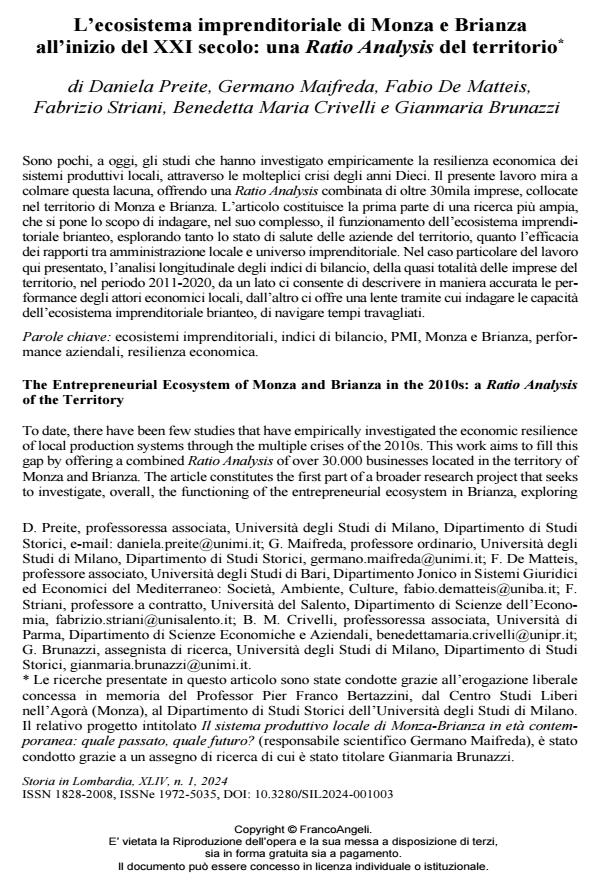The Entrepreneurial Ecosystem of Monza and Brianza in the 2010s: a Ratio Analysis of the Territory
Journal title STORIA IN LOMBARDIA
Author/s Daniela Preite, Germano Maifreda, Fabio De Matteis, Fabrizio Striani, Benedetta Maria Crivelli, Gianmaria Brunazzi
Publishing Year 2024 Issue 2024/1
Language Italian Pages 35 P. 63-97 File size 812 KB
DOI 10.3280/SIL2024-001003
DOI is like a bar code for intellectual property: to have more infomation
click here
Below, you can see the article first page
If you want to buy this article in PDF format, you can do it, following the instructions to buy download credits

FrancoAngeli is member of Publishers International Linking Association, Inc (PILA), a not-for-profit association which run the CrossRef service enabling links to and from online scholarly content.
To date, there have been few studies that have empirically investigated the economic resilience of local production systems through the multiple crises of the 2010s. This work aims to fill this gap by offering a combined Ratio Analysis of over 30.000 businesses located in the territory of Monza and Brianza. The article constitutes the first part of a broader research project that seeks to investigate, overall, the functioning of the entrepreneurial ecosystem in Brianza, exploring both the health status of the territory’s businesses and the effectiveness of the relationships between local administration and the entrepreneurial universe. In the specific case of the work presented here, the longitudinal analysis of the financial ratios of almost all businesses in the area, over the period 2011-2020, on the one hand, allows us to accurately describe the performances of the territory’s economic actors, and on the other hand, it provides us with a lens through which to inspect the capabilities of the Brianza entrepreneurial ecosystem to navigate challenging times.
Keywords: entrepreneurial ecosystems, financial ratios, SMEs, Monza and Brianza, business performance, economic resilience.
Daniela Preite, Germano Maifreda, Fabio De Matteis, Fabrizio Striani, Benedetta Maria Crivelli, Gianmaria Brunazzi, L’ecosistema imprenditoriale di Monza e Brianza all’inizio del XXI secolo: una Ratio Analysis del territorio in "STORIA IN LOMBARDIA" 1/2024, pp 63-97, DOI: 10.3280/SIL2024-001003